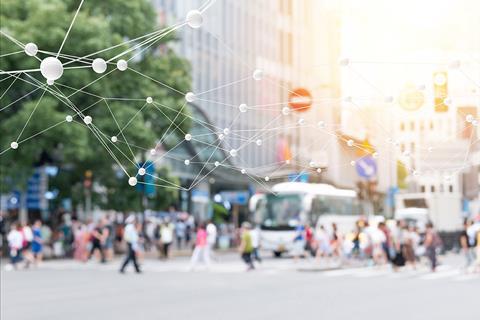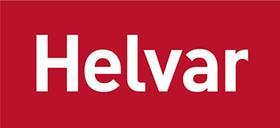This CPD, sponsored by Helvar, will look at the issues around the effectiveness of good lighting systems and how these can be adopted to ensure the continuing health, wellbeing and productivity of a building’s occupant.

CPD CREDITS: 60 MINUTES
DEADLINE: 4 OCTOBER 2019
For more information about Assemble Media Group’s CPD distance-learning programme, click here


Introduction
Lighting has a daily impact on the wellbeing and productivity of workers, whether in an office, a school or healthcare environment. When structured appropriately lighting can be a cost-effective and efficient way of boosting the way they do their job. But people are different and how they respond to their surroundings can vary. This can lead to alternative lighting set-ups according to individual needs. And while lighting controls can be effective, the data collected to enable mechanisms to work effectively has to be considered with care. This CPD will look at the issues around the effectiveness of good lighting systems and how these can be adopted to ensure the continuing health, wellbeing and productivity of a building’s occupant.

How lighting can enhance wellbeing
Many of us work indoors. Lighting plays a vital role in how productive we can be. Inadequate lighting can result in fatigue and headaches, which can affect our performance levels. In certain workplace situations – an equipment-intensive manufacturing plant, for example – poor and inadequate lighting can potentially result in accidents. Wellbeing is one of the biggest workplace trends today and standards such as the WELL Standard look at providing the optimum levels of wellbeing in the workplace. With this in mind lighting will inevitably change to meet the growing demands of employee wellbeing as well as boosting productivity.
A report published by the World Green Building Council in 2013 which identified several elements in a building environment suggested that better lighting could increase productivity by 23%. Then there is the ‘3,30,300’ rule – effectively, $3 for rent, $30 for utilities and $300 for employee costs, per square foot of work space annually – which argues that a 10% increase in energy efficiency, including lighting, would yield a $0.30 saving per square foot.
As well as economic and wellbeing benefits, lighting helps to get the most out of visual aesthetics, and light itself may be used as an aesthetic element. All of these rather obvious points have traditionally guided lighting design to provide visual performance and comfort and to improve the aesthetic appearance of an environment.
Light has also other, less straightforward effects on a human being. These can be divided into physiological and psychological elements. In addition, lighting installations themselves may psycho-logically affect wellbeing. Light affects the human body acutely by suppressing melatonin, which increases alertness. The illuminance level and the duration of light exposure increase the melatonin suppression and with long exposures, even moderate light levels may affect the circadian system. Other impacts include the increase in heart rate, body temperature and cortisol production, as well as the constriction of pupils. Light also increases both subjective and objective alertness, increases reaction time and reduces attention span. Moreover, there is some evidence about light directly affecting mood and cognitive functions.
Depression can be reduced by the appropriate use of lighting, particularly in the case of seasonal affective disorder (SAD) and the subclinical version of SAD, sSAD. Light may also be used to treat sleep disorders related to the circadian rhythm, and circadian disruptions resulting from shift work and jetlag.
Everyone’s circadian rhythm and perception of light is different. Activity, location, and age are just some of the factors which could determine which lighting profile is best suited for the environment. Customisable tools are designed to meet specific application and occupant needs and the programming flexibility of such systems make them suitable for a range of applications including commercial offices, healthcare facilities and educational institutions, where light can have a significant impact on occupants’ concentration, wellbeing and alertness.
Different circadian profiles can be set so that users can select the most appropriate lighting conditions for the time of year or season. The natural circadian rhythm of a person can be supported by using warmer – or relaxing – light with lower intensity in the morning and evenings, and cooler – energising – light during a typical working day.
Lighting can also be tuned during the day to support more temporary needs. Warmer white light with slightly lower intensity can be used to help users be calmer when facing high stress. Or cooler white light with higher intensity can be employed to help users energise, for example in the early morning.
According to Lighting Europe, the pan-European association for the lighting industry, human-centric lighting can support health and wellbeing through combining the visual, biological and emotional benefits of light. Research suggests that effective lighting can result in office workers performing up to 12% better, while in manufacturing productivity increases by up to 18%. Employee sick days could also be reduced by 1% as well as improving staff retention by an additional year.

Lighting standards
The trend of wellbeing, the discoveries of the effects of light and the technological advancements in lighting should encourage employers, building owners and designers to create spaces where lighting boosts wellbeing, which begs the question: how to create such an environment? While companies can work on their own to find out, technical standards created in consensus are an important source of information as well as a base for credibility for lighting designers.
But can standards keep up with the change? In previous research, this question has been studied for the case of medical technology, but for lighting such studies do not appear to exist.
There are several international and national standards concerning different aspects of lighting. Among the most well-known is ISO 8995:1:2002 (CIE S 008/E:2001) Lighting of work places – Part 1: Indoor, which ISO has developed in collaboration with the International Commission on Illumination (CIE). In Europe, CEN has published EN 12464-1:2011 Light and lighting. Lighting of work places. Part 1: Indoor work places, which is also widely used.
There are also a number of commercial certification bodies that have their own building certification programs. These certification bodies also act as de facto standardisation organisations, and their certification programs follow their respective de facto standards. The most widespread of these programs are BREEAM (Building Research Establishment Environmental Assessment Method) with 565,000 certificated buildings or spaces and LEED (Leadership in Energy and Environmental Design) with almost 60,000. BREEAM was published in 1990 and LEED in 2000.
Both programs focus on the environmental sustainability of buildings, and office lighting plays a small part in both.

Determinants in workplace lighting
Managerial decisions are a driving force for changes in lighting. In general, managers want to create a working environment that ensures the best results and retains talent. This is done not only by illuminating work tasks properly, but also considering the comfort and personal needs of employees by allowing control over lighting. Moreover, as the different needs in business are often changing, flexibility is usually sought in the interior design, which applies to lighting as well. The office lighting also generally promotes the company culture to both staff and visitors.
Along with management practices, there are two ways on how technology impacts lighting in a workplace. First, the technology or equipment that is being used by the workforce. For instance, the lighting needed for writing on a typewriter and writing on a computer is quite different. Videoconferencing requires adequate lighting to enhance facial features, allow proper image projection and make it easy to take notes. Due to wireless communication, employees are no longer tied to their desks, which requires suitable task lighting around the office. Beyond the office, in a factory situation lighting not only needs to aid and abet productivity, it needs to be able to keep processes and – crucially – workers safe.
The second determining factor is more straightforward; the current state of lighting technology, which determines what kind of products are available. The upgrade from fluorescent to LED lighting is an easy example of how new technology drives a change in offices. If a new technology is superior to an old one, it spreads out quite naturally, as the production of the old one stops.

The role of intelligent buildings in wellbeing and productivity
The development of smart – or ‘intelligent’ – buildings is resulting in the increased development and use of systems that determine the environmental needs of occupants based on data collected by sensors and other equipment.
Artificial intelligence (AI) can collect and analyse data on behaviour patterns and predictions in order to help designers improve building environments and lighting. This goes further than just design, since using this data can generate significant benefits and value for occupants. It can help to create a more human-centric approach to light and to the built environment. Increasing the wellbeing of occupants is the ultimate driver to use artificial intelligence to its fullest extent to tune lighting conditions.
An intelligent building collects and collates data on usage, system health and occupancy, which in turn can be used to adapt, improve and better manage spaces. Occupancy data can help to optimise energy consumption and reduce costs. Take cleaning costs; these can be reduced by knowing which meeting rooms are in regular use and which rooms aren’t used at all.
By utilising predictive lighting, a building can identify regular patterns and routes and automatically turns on the lights when required. For example, if there is a meeting in a given room every Tuesday morning at 9am this repetitive action is something that can be planned for in advance. With predictive lighting, lights can be automated, and the HVAC can be switched on before the meeting.
Intelligent buildings can also remember spacial preferences, including preferred light levels, such as which meeting room is preferred and how long occupants usually spend in there. Light settings at individual desks can also be tailored according to the user’s needs.
Data like this can result in a boost in satisfaction and productivity since people are happier in environments that are tuned to their own needs, particularly if this happens automatically. Continually collecting data like this will create further ease of use and user experiences will flourish, providing occupants with better working environments and the ability to operate with greater degrees of versatility.
AI has emerged as an evolutionary force in virtually every industry. In the case of the lighting arena the scope for applying AI affects the various stages involved in the lighting life-cycle such as design, installation, commissioning and configuration. For example, a self-learning network of lighting components can communicate and set itself up without requiring human intervention in much the same way as auto-commissioning systems are used in IT industry. This reduces the time needed to commission new lighting installations.

How to take this module
Assemble Media Group’s CPD distance-learning programme is open to anyone seeking to develop their knowledge and skills. Each module also offers members of professional institutions an opportunity to earn between 30 and 90 minutes of credits towards their annual CPD requirement.
This article is accredited by the CPD Certification Service. To earn CPD credits, read the article and then click the link below to complete your details and answer the questions. You will receive your results instantly, and if all the questions are correctly answered, you will be able to download your CPD certificate straight away.
CPD CREDITS: 60 MINUTES
DEADLINE: 4 OCTOBER 2019
Privacy policy
Information you supply to Assemble Media Group Limited may be used for publication and also to provide you with information about our products or services in the form of direct marketing by email, telephone, fax or post. Information may also be made available to third parties. Assemble Media Group Limited may send updates about Building CPD and other relevant Assemble Media Group Limited products and services. By providing your email address you consent to being contact by email, telephone, fax or post by Assemble Media Group Limited or other third parties. If at any time you no longer wish to receive anything from Assemble Media Group Limited or to have your data made available to third parties, contact the Data Protection Coordinator at building@building.co.uk. View our full privacy policy he




























No comments yet